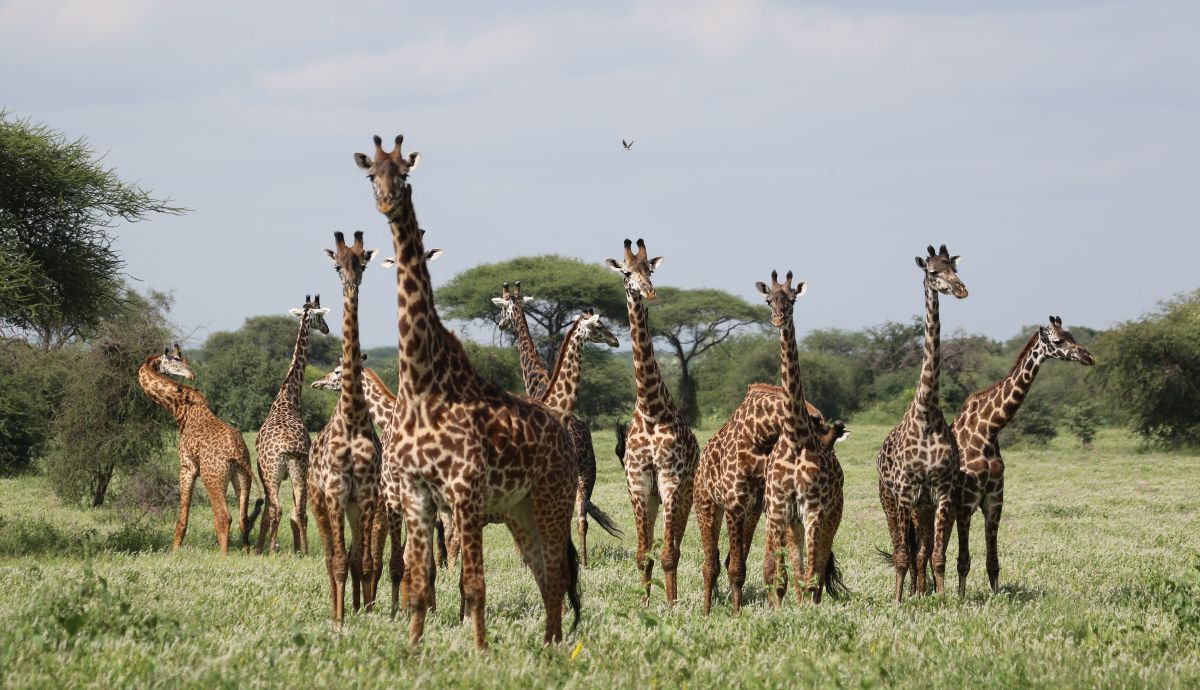A database codeveloped by CSIC will help predict biodiversity’s response to climate change
The results have enabled the research team to create an open, collaborative database that will support ecosystem management and biodiversity conservation

Giraffes (Giraffa camelopardalis) are one of the study cases / Credit: Monica Bond
An international team, led by the University of Zurich and the Doñana Biological Station (EBD-CSIC), has published the first global-scale comparative study exploring how climatic factors and biological interactions combine to determine population survival, reproduction, and abundance—essential for understanding how resilient species may be in the face of climate change. The research, which integrates long-term data from 41 different plant and animal species, has made it possible to identify common patterns in how they respond to changes in climate and to develop a database that will help design conservation measures.
“Predicting how climate change will affect wildlife is tricky because many factors—like survival, reproduction, and competition—interact in complex ways,” explains Maria Paniw, CSIC researcher at the Doñana Biological Station.
More accurate predictions
Until now, most studies have not explicitly compared across different species the combined impact of different climatic factors on both survival and reproduction and how these demographic impacts scale to population abundance. Nor have they factored in how individuals interact with one another—oversights that can lead to underestimating or overestimating the real risks climate change poses to wildlife.
“The findings highlight that climate impacts on nature are more complex—and sometimes more buffered—than simple predictions may suggest, and this holds true for plants as well as animals” says Paniw.
The study reveals that the combination of multiple variables can lead to greater impacts than expected. For example, when low rainfall coincides with high temperatures, the negative effects on survival and reproduction intensify, especially in short-lived species such as small mammals.
Conversely, integrating variables related to species interactions can sometimes buffer the expected effects of climate change. For instance, a decline in population density due to climate stress may ease competition and create positive feedback that reduces the initially projected impact.
A dynamic database
The research team also highlights other biases in climate–biodiversity predictions: most studies focus on plants, birds, and mammals in the Northern Hemisphere, while invertebrates and regions in the Global South remain underrepresented. They also point to reproducibility issues in ecology, since many population models cannot be replicated due to lack of access to data and code.
To overcome these limitations, the researchers have created an open, collaborative database that any member of the scientific community can access and enrich with their own data. This resource will enable broader analyses, help test how climate–species interactions operate across more species and ecosystems, and support the integration of these factors into future climate impact research.
Beyond its academic value, the database also has practical applications: it will guide conservation measures, ecosystem management, and biodiversity policymaking.
"By identifying common patterns of when and why populations are most vulnerable using some of the most detailed studies out there, resources can be better targeted to protect less well-studied species under climate change,” notes Paniw.
Understanding how populations respond across their full life cycle is fundamental for designing effective conservation strategies. Incorporating multiple drivers—both abiotic (such as climate) and biotic (such as species interactions)—together with broader data accessibility is crucial to mitigating the effects of climate change on global biodiversity.
Reference
Esin Ickin, Eva Conquet, Briana Abrahms, Steve D Albon, Daniel T Blumstein, Monica L Bond, P Dee Boersma, Tyler J Clark-Wolf, Tim Clutton-Brock, Aldo Compagnoni, Tomáš Dostálek, Sanne M Evers, Claudia Fichtel, Marlène Gamelon, David García-Callejas, Michael Griesser, Brage B Hansen, Stéphanie Jenouvrier, Kurt Jerstad, Peter M Kappeler, Kate Layton-Matthews, Derek E Lee, Francisco Lloret, Maarten JJE Loonen, Anne-Kathleen Malchow, Marta B Manser, Julien G A Martin, Ana Morales-González, Zuzana Münzbergová, Chloé R Nater, Neville Pillay, Maud Quéroué, Ole W Røstad, Teresa Sánchez-Mejía, Carsten Schradin, Bernt-Erik Sæther, Arpat Ozgul, Maria Paniw. Comparative life-cycle analyses reveal interactinv climatic and biotic drivers of population responses to climate change. PNAS Nexus. https://doi.org/10.1093/pnasnexus/pgaf286